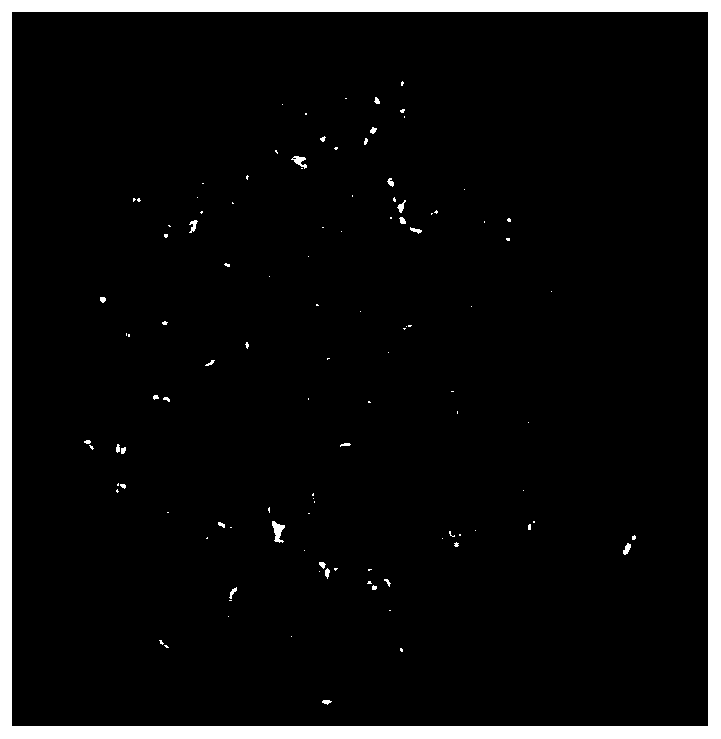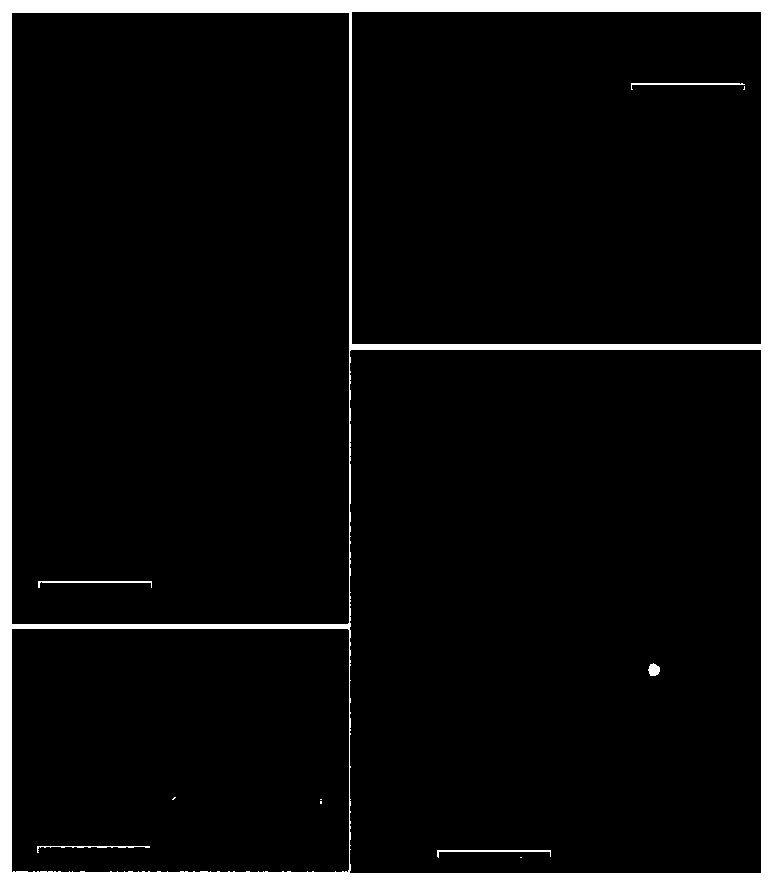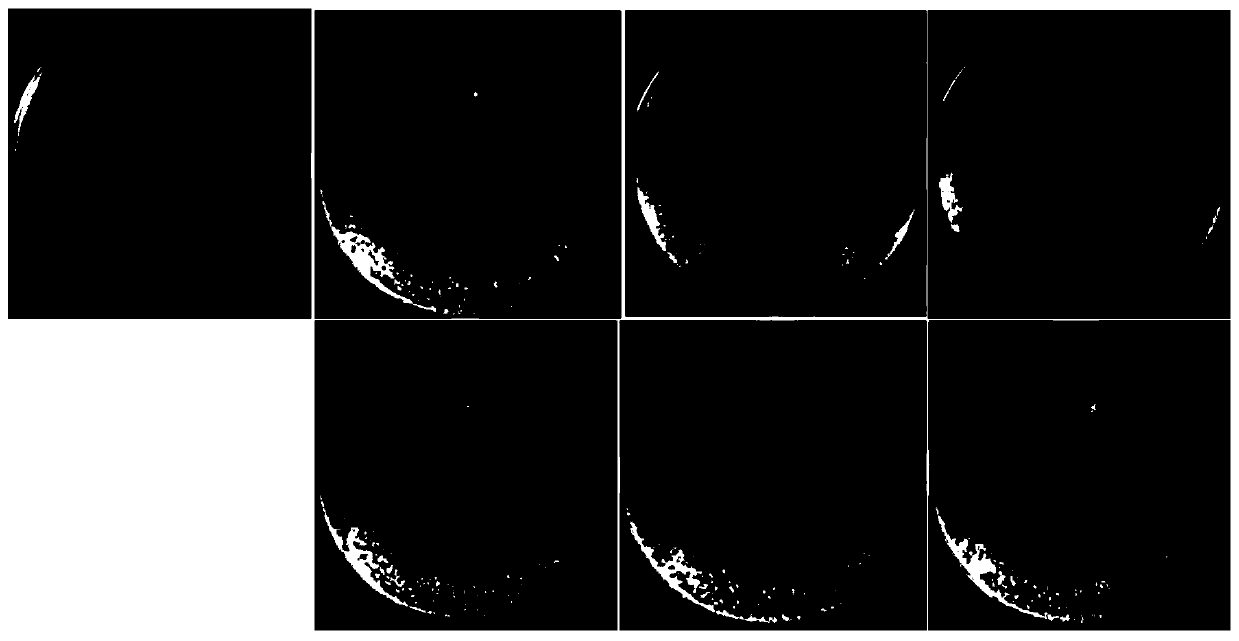Trichoderma sp. capable of inhibiting growth of citrus black spot bacteria and application thereof
A Trichoderma, black spot technology, applied in the direction of application, plant growth regulator, microbial-based methods, etc., can solve problems such as endangering human health, polluting the environment, and pesticide residues
- Summary
- Abstract
- Description
- Claims
- Application Information
AI Technical Summary
Problems solved by technology
Method used
Image
Examples
Embodiment 1
[0021] Embodiment 1 strain separation
[0022] Soil samples were collected from all over the country and separated by the selective medium dilution plate method. The process is as follows: Weigh 10g of soil samples, put them into a 250mL triangular flask filled with small steel balls and 90mL of sterile water, and place them on a shaker at 120r min -1 Shake for 10 minutes to fully disperse the soil sample to form a 10-fold dilution; then draw 1 mL of the 10-fold dilution, add it to a centrifuge tube of 9 mL of sterile water, and mix well; then take 1 mL from it and add it to 9 mL of sterile water In a centrifuge tube of water, mix thoroughly to prepare a 1000-fold dilution. Pour the melted PDA culture medium into a petri dish, 15mL per dish; after the culture medium is cooled to form a flat plate, draw 0.1mL of the soil sample diluted 1000 times and add it to the PDA medium plate, and then use sterile coating Spread the diluted solution evenly with a device, and repeat 3 time...
Embodiment 2
[0027] Embodiment 2 strain identification
[0028] The colony morphology of PDA medium and the characteristics of conidiophore branches and spores were classified.
[0029] On PDA medium, at 25°C, 12h / 12h light and dark culture strains for more than 7 days, stick a small piece of transparent tape on the edge of the colony, then remove the tape and put it in glycerol lactic acid on the glass slide, add 1 Drop glycerol lactic acid, add a cover glass for inspection (lactic acid 500mL, glycerol 1000mL, distilled water 500mL).
[0030] Strain A94 grew rapidly on PDA medium, with an average diameter of more than 1.5 cm per day. The initial hyphae are white, and the aerial hyphae are well developed. With the massive production of spores, the colonies gradually turned dark green ( figure 1 ). Conidiophores erect or curved, smooth. The branches are irregular, the branches are nearly right-angled, and the bottle stems are solitary, opposite, and whorled. The bottle stem is obvious...
Embodiment 3
[0031] Example 3 Molecular identification
[0032] (1) DNA extraction
[0033] 1) After culturing the A94 strain on a PDA plate at 22°C for 7 days, scrape the mycelium on the plate with a toothpick, and put it into a sterilized 1.5mL centrifuge tube containing 300μL extraction buffer;
[0034] The formula of the extraction buffer is: 1M KCl, 100mM Tris-HCl, 10mM EDTA, pH=8.0;
[0035] 2) Grind the picked hyphae with an electric grinder, then add 300 μL of extraction buffer, and shake vigorously for 2 minutes;
[0036] 3) Centrifuge at 10000rpm for 10min;
[0037] 4) Aspirate the supernatant, transfer to another new centrifuge tube, and discard the precipitate;
[0038] 5) Add an equal volume of isopropanol (analytical grade) to the supernatant, gently invert and mix several times, then centrifuge at 12000rpm for 10min to precipitate nucleic acid;
[0039]6) Gently pour off the supernatant, and invert the centrifuge tube containing the precipitate on absorbent paper to drai...
PUM
 Login to View More
Login to View More Abstract
Description
Claims
Application Information
 Login to View More
Login to View More - R&D
- Intellectual Property
- Life Sciences
- Materials
- Tech Scout
- Unparalleled Data Quality
- Higher Quality Content
- 60% Fewer Hallucinations
Browse by: Latest US Patents, China's latest patents, Technical Efficacy Thesaurus, Application Domain, Technology Topic, Popular Technical Reports.
© 2025 PatSnap. All rights reserved.Legal|Privacy policy|Modern Slavery Act Transparency Statement|Sitemap|About US| Contact US: help@patsnap.com



